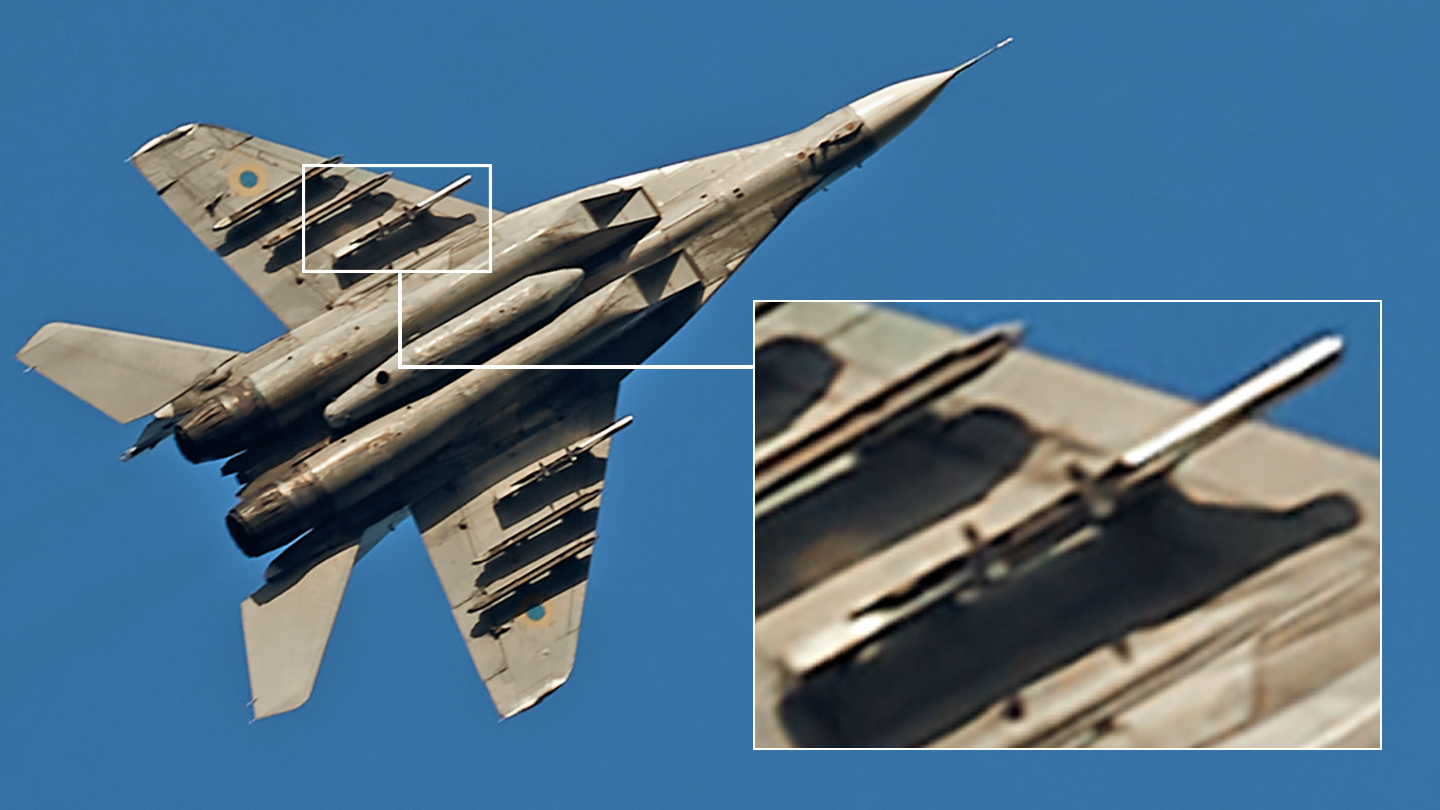At least one Ukrainian MiG-29 Fulcrum fighter is flying with what appears to be a new and previously unseen kind of underwing pylon system. While we currently don’t know the exact purpose of this pylon, it raises some very interesting questions, especially bearing in mind the previous adaptations that have been made to the MiG-29 (and other Soviet-era combat aircraft) to allow them to carry new weapons of Western origin.
Especially intriguing is the origin of this photo. It was posted today to the official Twitter account of the Ukrainian Air Force, together with the caption “New day — new challenges!” That phrase could well suggest that some new kind of capability is being used. Either way, the fact that the Ukrainian Air Force chose to publicize this particular photo also indicates they are happy to show something of that new capability, whatever it might be.
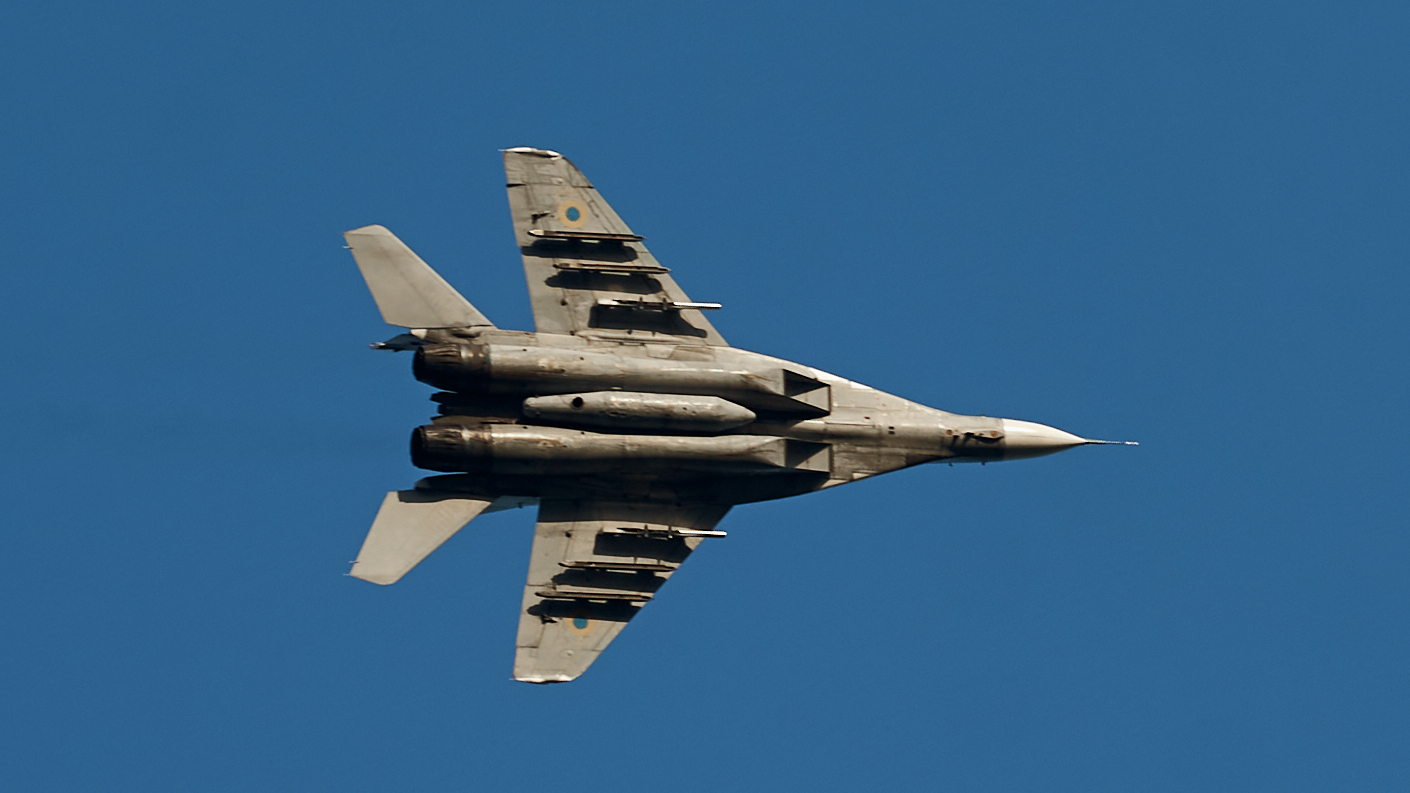
The photo in question depicts the underside of an airborne MiG-29 with the full complement of six underwing pylons, but no armament attached to them. An external fuel tank is carried on the centerline. The jet has a distinctive off-white nose radome, suggesting the MiG is probably not one of those provided to Ukraine from Polish or Slovakian Air Force stocks.

Regardless of the origin of this particular MiG-29, the intriguing aspect of the photo is the appearance of the two extended inner underwing pylons, closest to the engine nacelles. Normally, these would be used for the AKU-470 launch rails that each accommodate a single R-27R (AA-10 Alamo) air-to-air missile (AAM), with semi-active radar guidance. Infrared-guided R-27Ts can also be carried but are rarely seen.
For close to a year, Ukrainian MiG-29s have also been using an ad-hoc pylon for the carriage of the U.S.-supplied AGM-88 High-speed Anti-Radiation Missile (HARM).
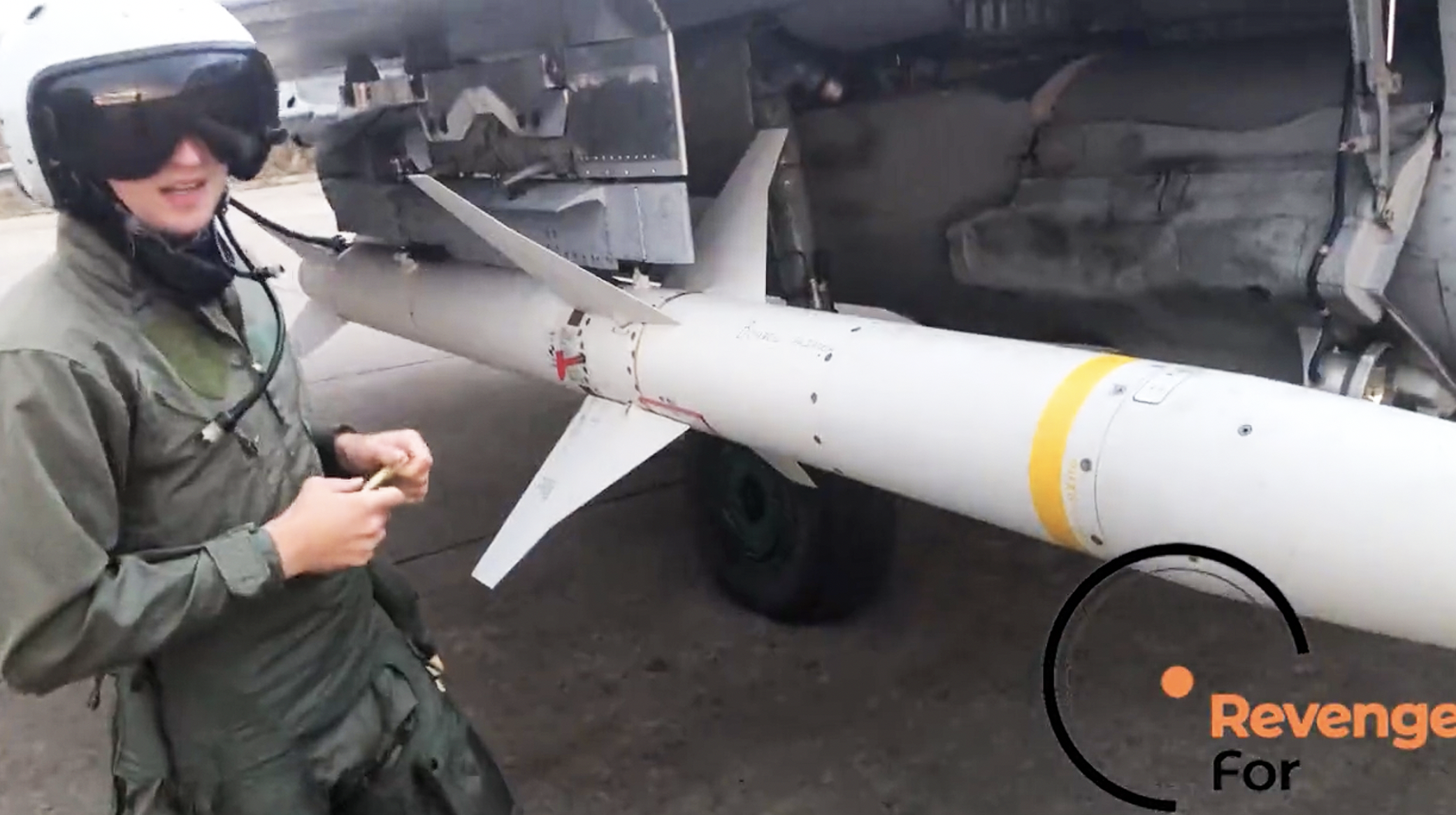

However, the pylons seen in this photo are not like either of those options. Key features are their length, or more particularly the degree to which they project out ahead of the wing leading edge. The color is also unusual, either a light gray or even white on the main part of the launch rail itself. There appear to be quadruple shackles or sway braces on each pylon, of the kind normally associated with securing a heavier piece of ordnance. Finally, the pylon has a long shape with a rounded end cap that could be somewhat similar to something that would contain an electronic warfare emitter or passive radio frequency detector.
All in all, the photo suggests we are looking at a pylon that’s either associated with a new type of air-launched weapon that’s been introduced on the Ukrainian MiG-29 or that the pylon itself is of a new type that incorporates some kind of combat-related subsystem. Another very real possibility is that it packs both functions. Integrating electronic warfare and defensive countermeasures onto weapons pylons is a widely used concept.
In the first case, we know that Ukraine has received Joint Direct Attack Munition-Extended Range precision-guided bombs, or JDAM-ERs, with a small stockpile of these bombs kits that can hit targets up to 45 miles away thanks to their pop-out wing kits. So far, we don’t know what aircraft types have been adapted to launch these weapons, but the MiG-29 could be an option. In this case, a new type of pylon may have been provided. The heavy-duty bomb braces could also point to a larger weapon like JDAM-ER, and one that falls away, rather than being fired or ejected from the pylon.
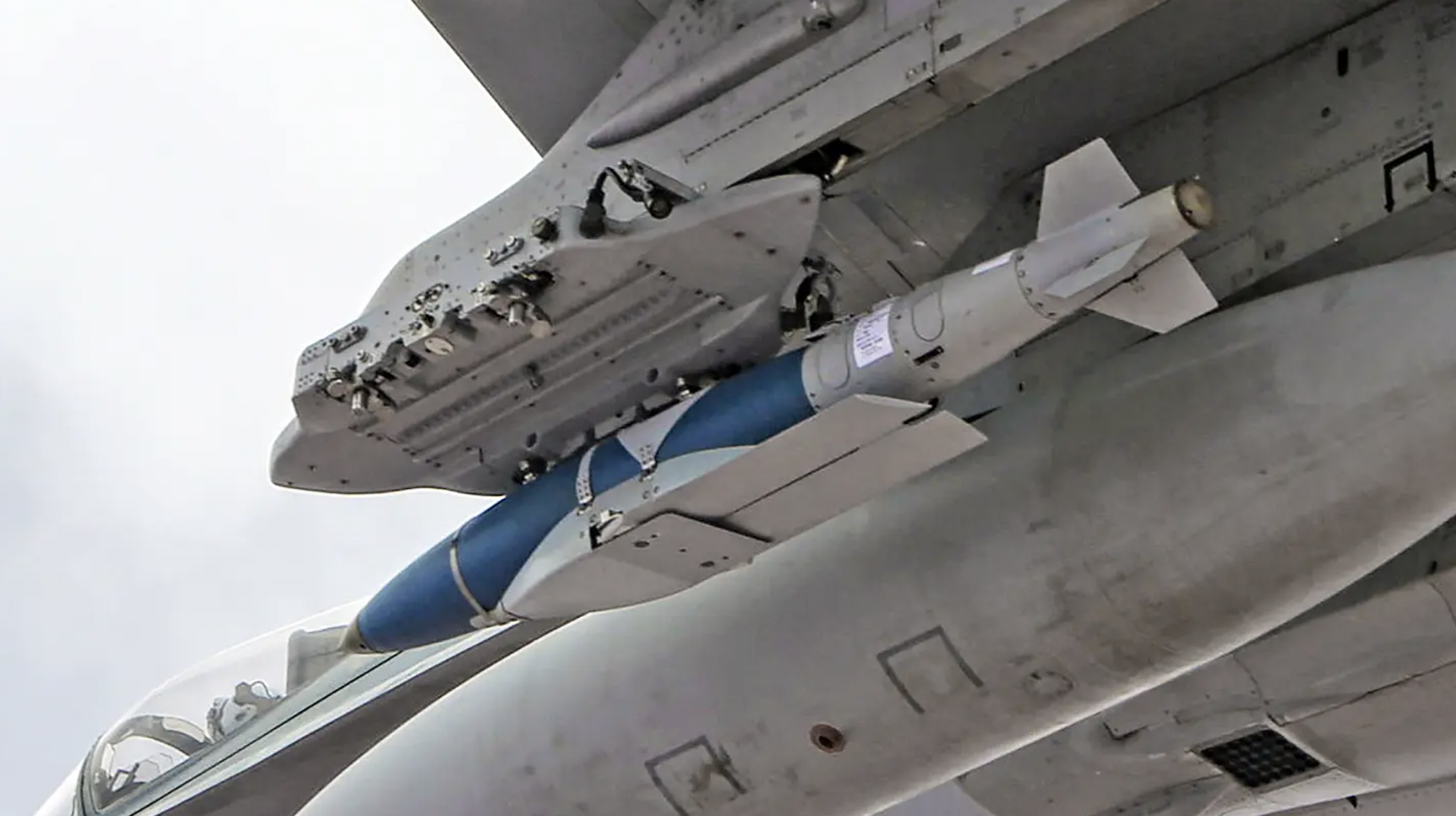
While Ukraine has also received other weapons that could possibly be integrated on fighter jets, namely the AIM-7 Sparrow semi-active radar homing air-to-air missiles (AAMs) and the AIM-9 Sidewinder infrared-guided AAM, these are understood to be earmarked for launch from ground-based air defense systems, not fighters. At the same time, the appearance of the pylons does not immediately suggest an interface for the AIM-7 or AIM-9, let alone the AIM-120 Advanced Medium-Range Air-to-Air Missile (AMRAAM). The latter is an AAM with active radar guidance and something the Ukrainian Air Force has long prized. However, so far, there’s only confirmation that AMRAAMs have been provided for ground-launched NASAMS air defense systems, not for aircraft.
In terms of basic appearance, the new MiG-29 pylon perhaps looks most similar to the launch rail used for the air-launched version of the German-designed IRIS-T infrared-guided AAM, although the sway braces remain an anomaly. Examples of the IRIS-T have been supplied to Ukraine for use by their small number of IRIS-T SLM air defense systems. Again, there is no evidence that these missiles have also been integrated on any Ukrainian aircraft.
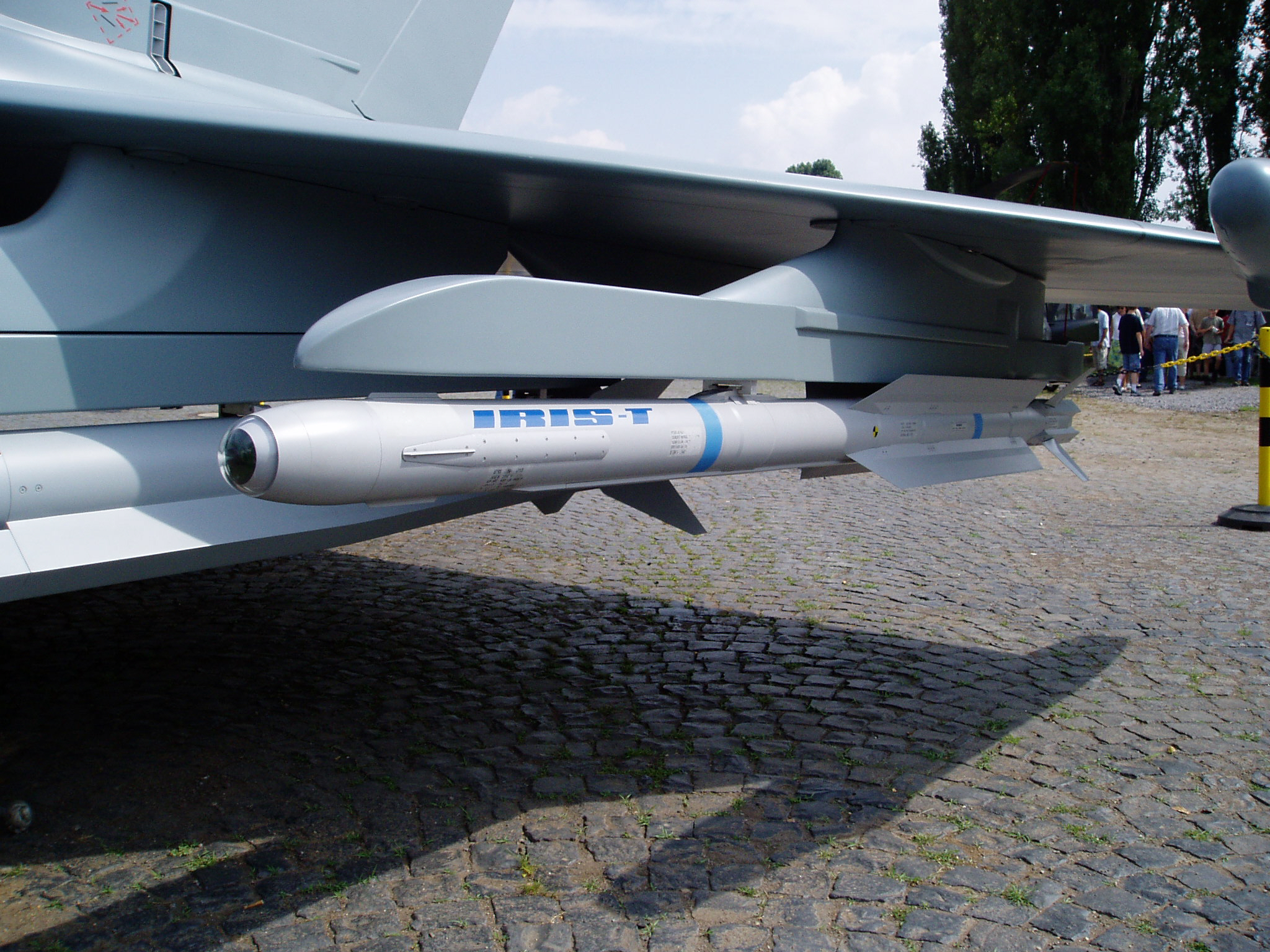
Editor’s note: June 21st, 2023 —
It is possible that this could be an IRIS-T mounted on the side of the pylon. Although we don’t see its strakes or tail fins. The strakes could be blocked by the pylon, but the tailfins should extend further and be a bit more prominent. The shadow doesn’t look right to support this possibility, but it’s tricky to ascertain with a lower resolution photo. It’s possible this is a training round without tailfins. Regardless, this should be considered as a possibility. IRIS-T would replenish Ukraine’s air-to-air missile stocks and would provide a short-to-intermediate range advanced air-to-air missile capability. This could be especially useful against drones and cruise missiles. Integrating the missile with the aircraft’s radar would be beneficial, but it could also be used in simple boresighted mode. It is unlikely it could take advantage of the MiG-29’s high off-boresight helmet aiming capabilities, but for the type of work the MiG-29s are doing today in Ukraine, this is not really important.
A number of other Western missiles have also been supplied to Ukraine, including the Brimstone anti-armor missile, Harpoon anti-ship missile, and Hellfire air-to-ground missile. Again, we have no evidence of air-launched applications, and the pylon doesn’t immediately suggest any of these candidates, although it’s by no means impossible.
The possibility that this pylon includes some sort of electronic warfare or sensor capability is also highly relevant. As noted earlier, the dimensions, shape, and, to some degree, the color of the new pylon could suggest the possibility that some kind of sensor or emitter has been integrated into it.
One possibility could be some kind of electronic support measures (ESM) or some kind of radar homing and warning receiver (RHWR). This is essentially a passive sensor suite that can gather intelligence through the detection of certain types of electromagnetic radiation — those used by radars on air defense systems, in particular. Flying with two sensors spaced equally far apart would allow for some level of triangulation of potentially hostile emitters.
As such, ESM/RHWR would be of particular relevance for the defense-suppression mission, already flown by Ukrainian MiG-29s armed with HARMs. It could potentially be able to provide cues for employment of these missiles against emitting Russian air defense systems.

While it’s not totally clear exactly how Ukraine employs the HARM, from what we understand they are generally launched in a pre-programmed mode, in which the missile is programmed to fly to the area of a specific threat area before the jet leaves the ground. In this scenario, the missile is launched ‘blind,’ typically at a longer range, using a highly lofted trajectory to maximize its ‘hang time,’ with the aim of acquiring a target during its flight. This type of shot is often paired with other aerial operations in an attempt to protect other aircraft from being engaged for a short period of time.
But having some kind of ESM sensor on the launch aircraft could open up new modes of employment, especially if interfaces in the cockpit allow for more dynamic use of the HARMs. Under such an arrangement, targeting data could be handed over to the AGM-88 in real-time, before being fired and a proper mode selected. This would allow for HARMs to be launched against targets of opportunity. Typically, this would be a previously unknown or ‘pop-up’ threat that goes active. Even a basic ESM/RHWS system could offer greater sensitivity than what the HARM can provide itself, including possibly providing ranging information and thus yield better results.
Finally, this could be a pylon that features electronic warfare jammers, adding a modular layer of protection for Ukrainian MiG-29s that are operating in an extremely high-threat combat environment. The dense Russian anti-air overlay reaches deep into Ukrainian-controlled territory, especially at altitude. Some sort of electronic warfare self-protection would be highly welcome and bolting it on makes a lot of sense.
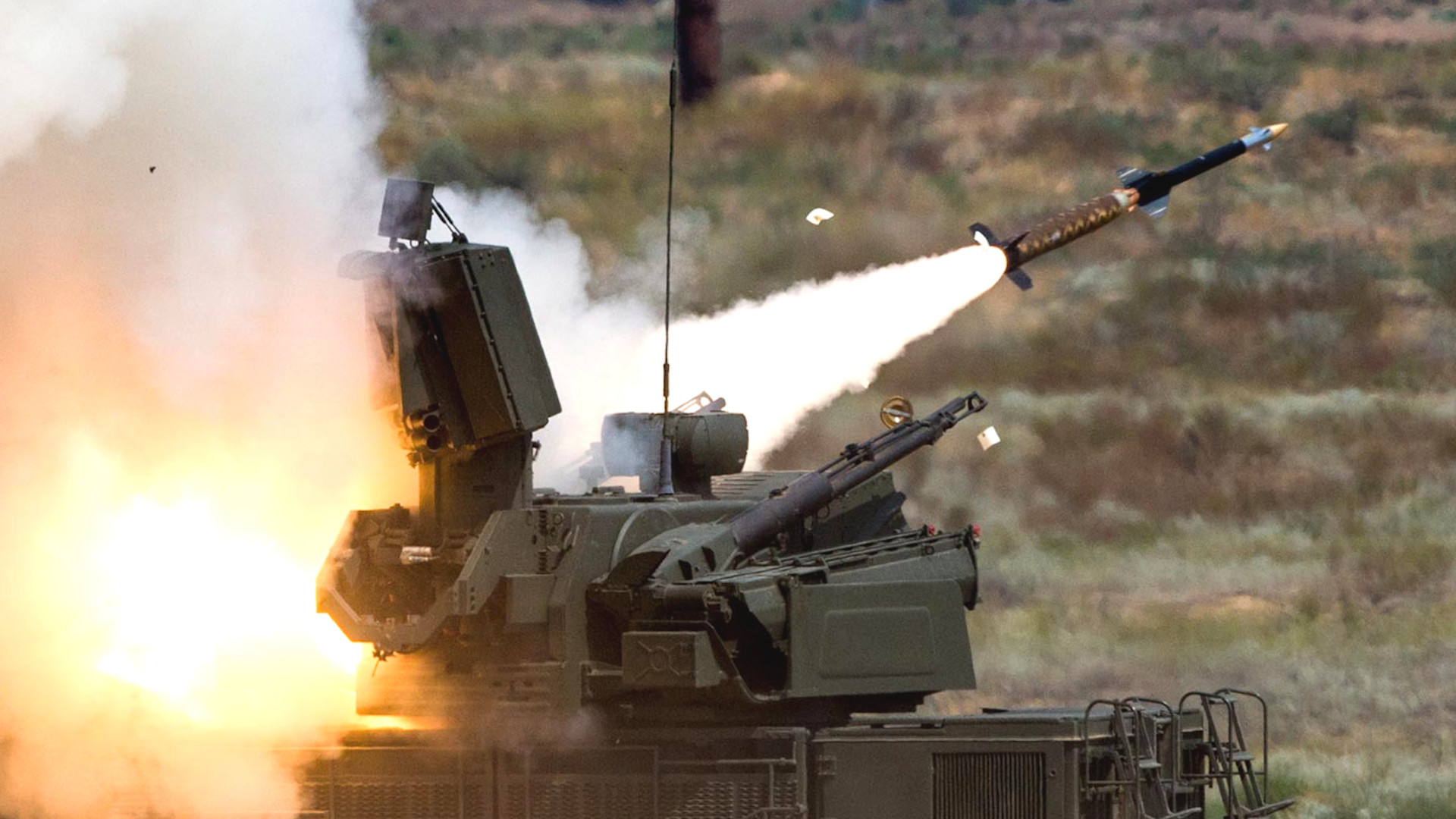
The need for a new dedicated pylon could have presented an opportunity to introduce multi-function capabilities to it, especially now that the United States, its allies, and Ukraine have more extensive knowledge on integrating Western weapons onto the MiG-29 and exactly what Ukraine could most use. By integrating another function onto a new pylon, it means that a stores station is not lost by having to mount a dedicated pod or pods. Also, rushing these capabilities to Ukraine’s aging tactical jet fleet is especially relevant as Western fourth-generation fighters are still many months out from arriving, at best.
So those, at least, are some of the options that could help explain the MiG’s new mystery pylon.
So far, the war in Ukraine has thrown up some surprising examples of novel weapons employment and, in particular, adaptations of new weapons aboard Soviet-era Ukrainian Air Force aircraft. Today’s photo teaser from that service might just be our first glimpse of the next such example of air warfare innovation.
Contact the author: thomas@thedrive.com
